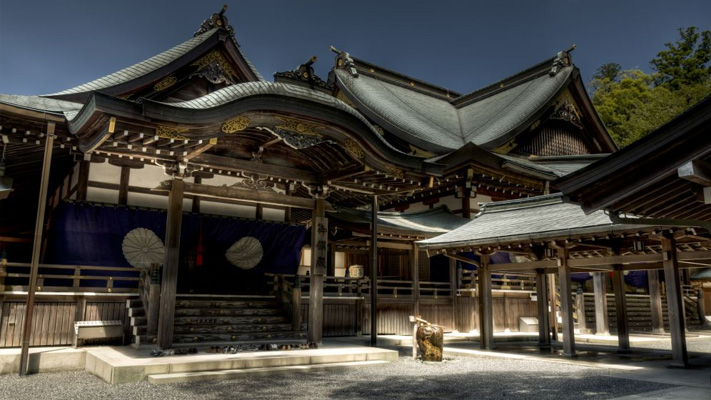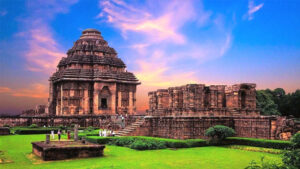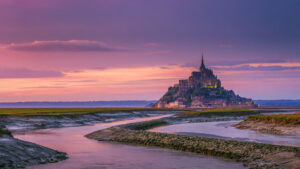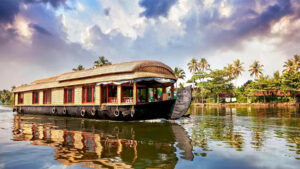ISE GRAND SHRINE, JAPAN – JOURNEY INTO SACRED SERENITY

The Ise Grand Shrine, located in Ise City, Mie Prefecture, Japan, is one of the most important and revered Shinto shrines in the country. Also known as Ise Jingu or simply Jingu, it is a complex of shrines dedicated to the goddess Amaterasu, who is considered the ancestor of the Japanese imperial family. The shrine holds immense historical and cultural significance and attracts millions of visitors each year. The serene and spiritual atmosphere, coupled with the beautiful natural surroundings, makes it a place of deep reverence and tranquility. The Ise Grand Shrine is not only a religious site but also a symbol of Japan’s traditional architecture, craftsmanship, and the enduring spirit of the Japanese people.

What to Expect
When visiting the Ise Grand Shrine in Japan, here are some things you can expect to experience:
- Sacred Atmosphere: The Ise Grand Shrine holds great spiritual significance and is considered one of the holiest places in Japan. Expect to encounter a serene and reverential atmosphere as you explore the shrine grounds. Visitors are encouraged to approach with respect and observe the customary etiquette.
- Beautiful Architecture: The shrine complex is renowned for its traditional Japanese architecture, which reflects the essence of Shinto design. Expect to see elegant wooden structures with thatched roofs, intricate carvings, and meticulous craftsmanship. The buildings are built using ancient construction techniques, and their simplicity and harmony with nature create a tranquil and harmonious ambiance.
- Multiple Shrines: The Ise Grand Shrine is a collection of several shrines, each dedicated to a different deity. The main shrines are Naiku (Inner Shrine) and Geku (Outer Shrine). Naiku is the primary shrine, housing the sacred mirror symbolizing Amaterasu, while Geku is dedicated to Toyouke no Omikami, the goddess of agriculture and industry. Expect to visit both shrines to pay your respects and experience their individual spiritual atmospheres.
- Rituals and Traditions: The Ise Grand Shrine is a place of religious rituals and customs deeply rooted in Shinto tradition. Expect to witness or participate in rituals such as cleansing rituals at the temizuya (water pavilion), offering prayers at the main hall, and making donations at the shrine. Observing these rituals can offer a deeper understanding of Japanese culture and spirituality.
- Natural Surroundings: The Ise Grand Shrine is located in a picturesque setting, surrounded by lush forests and serene landscapes. Expect to enjoy the tranquility and beauty of the natural surroundings as you explore the shrine grounds. The peaceful atmosphere and scenic views create a sense of harmony and connection with nature.
- Pilgrimage Experience: The Ise Grand Shrine is a popular destination for pilgrims seeking spiritual purification and connection with the divine. Expect to encounter pilgrims dressed in traditional white attire, engaging in prayer, and following sacred rituals. Witnessing their devotion and participating in the pilgrimage experience can be a deeply meaningful and introspective journey.
- Cultural Exhibitions and Events: The Ise Grand Shrine occasionally hosts cultural exhibitions and events that showcase traditional arts, crafts, and performances. Expect to have the opportunity to learn more about Japanese culture, folklore, and traditions through these special exhibitions and events.
Visitor Experiences and Activities
When visiting the Ise Grand Shrine in Japan, there are several visitor experiences and activities that you can enjoy. Here are some highlights:

- Shrine Exploration: Take your time to explore the shrine grounds and admire the exquisite architecture and serene atmosphere. Stroll along the paths, visit the various shrine buildings, and soak in the spiritual ambiance of the sacred site.
- Prayer and Purification: Participate in the shrine’s rituals and traditions by offering prayers and purifying yourself at the temizuya, a water pavilion where visitors ritually cleanse their hands and mouth before entering the sacred spaces. Follow the proper etiquette and observe the customs to fully immerse yourself in the spiritual experience.
- Walking the Pilgrimage Route: Embark on a pilgrimage journey by walking the traditional pilgrimage route known as Okage Yokocho. This street, lined with traditional buildings, shops, and restaurants, leads to the shrine and offers a glimpse into the local culture and history. It’s a meaningful way to connect with the shrine and its surroundings.
- Traditional Crafts and Souvenirs: Explore the shops and stalls around the shrine where you can find a wide range of traditional crafts, souvenirs, and local specialties. Look for items such as amulets, incense, calligraphy brushes, and handmade crafts that make for unique mementos of your visit.
- Cultural Events and Festivals: Check the shrine’s schedule for any special cultural events or festivals taking place during your visit. The Ise Grand Shrine hosts various events throughout the year, including ceremonies, performances, and processions that provide insights into the local traditions and customs.
- Local Cuisine: Sample the local cuisine in the nearby restaurants and cafes. Taste regional specialties such as Ise Udon, Matsusaka Beef, and Ise Lobster, which are known for their exceptional flavor and quality. Indulge in a culinary journey that complements your spiritual experience.
Other Attractions Nearby
In addition to the Ise Grand Shrine, there are several top attractions and places to visit near Ise City, Mie Prefecture, Japan. Here are some notable ones:

- Okage Yokocho: Located near the shrine, Okage Yokocho is a traditional street lined with buildings reminiscent of the Edo period. Explore the charming shops, restaurants, and teahouses offering local specialties and traditional crafts. It’s a great place to immerse yourself in the local culture and enjoy the nostalgic atmosphere.
- Meoto Iwa (Wedded Rocks): Situated in the sea off the coast of Futami, Meoto Iwa is a pair of sacred rocks connected by a shimenawa (sacred rope). It represents the union of the male and female deities of Shinto mythology. The site offers stunning views and is known for its picturesque sunsets.
- Toba Aquarium: Just a short distance from Ise City, the Toba Aquarium is one of Japan’s largest aquariums. It showcases a wide variety of marine life, including dolphins, whales, penguins, and colorful tropical fish. Explore the exhibits, watch entertaining shows, and learn about the fascinating underwater world.
- Mikimoto Pearl Island: Located in Toba, Mikimoto Pearl Island is a renowned pearl cultivation and exhibition center. Discover the history of pearl cultivation in Japan, witness pearl diving demonstrations, and browse through the stunning collection of pearl jewelry. Don’t miss the opportunity to purchase high-quality pearls as a memento of your visit.
- Ise-Shima National Park: Embrace the natural beauty of Ise-Shima National Park, which encompasses the Ise Bay coastline and the surrounding islands. Explore the scenic landscapes, hiking trails, and beaches. The park offers breathtaking views, especially from the observation deck at the summit of Mount Asama.
- Yokoyama Observation Deck: Located in Ise City, the Yokoyama Observation Deck provides panoramic views of the city and the nearby countryside. It’s a peaceful spot to relax, enjoy the scenery, and take memorable photographs.
- Matsusaka Castle: About an hour’s drive from Ise City, Matsusaka Castle is a historical site that offers insights into Japan’s feudal era. Although the original castle no longer stands, the reconstructed main tower serves as a museum showcasing the history and artifacts of the Matsusaka region.

Best Time to Visit
- Spring (March to May): Spring is a delightful time to visit the Ise Grand Shrine. The weather is generally mild, with temperatures ranging from 10°C to 20°C (50°F to 68°F). Cherry blossoms usually bloom in late March or early April, creating a picturesque backdrop for your visit. The shrine grounds are often adorned with pink flowers, adding to the enchanting atmosphere.
- Autumn (September to November): Autumn is another recommended season to visit the Ise Grand Shrine. The temperatures range from 15°C to 25°C (59°F to 77°F), offering pleasant weather for exploring the shrine and its surroundings. The autumn foliage, especially in November, paints the landscape in vibrant hues of red, orange, and gold, creating a stunning backdrop for your visit.
- Special Events and Festivals: The Ise Grand Shrine holds various ceremonies and festivals throughout the year. Some notable events include the Spring Grand Festival (Haru-no-Taisai) held in April, the Autumn Grand Festival (Aki-no-Taisai) held in October, and the Kannamesai (Harvest Festival) held on October 17th. These events offer a unique opportunity to witness traditional rituals, processions, and cultural performances associated with the shrine.
Considering the weather, the beauty of cherry blossoms in spring, the vibrant autumn foliage, and the opportunity to witness special events and festivals, the recommended times to visit the Ise Grand Shrine are during the spring months of March to May and the autumn months of September to November. These periods offer favorable weather conditions, cultural significance, and visually captivating landscapes to enhance your experience at this revered Shinto shrine.


















































